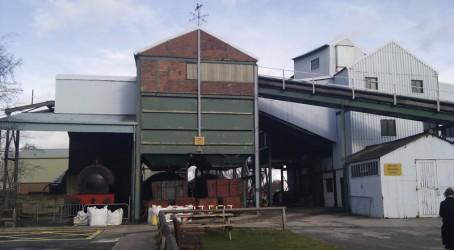Museums
Coal lies close to the surface in West Yorkshire, and the Caphouse Colliery dates back to the 18th century. Today, the colliery and the adjoining Hope Pit form part of the National Coal Mining Museum for England. Set over an extensive site in Overton, near Wakefield, the museum strives to preserve and reveal some of the history, present, and future of mining in England.
Caphouse Colliery was sunk around 1790. Early buildings from 1876 that are still standing today include the Grade II listed stone and brick chimney, heapstead and winding house. The administration block and the baths were built later, in the 1930s.
Hope Pit began working in 1832. The Inman Shaft beam-engine house still stands, although the engine is long gone. The pit was nationalised in 1947, joined to Denby Grange Colliery in 1981 and finally closed in 1985. It became a museum shortly afterwards.
All visitors are issued with a handy map, listing more than 30 small buildings open to the public and things to see and do. The Caphouse site is home to several fascinating exhibitions. Mining Lives records how miners and their families lived, while the 1842 gallery is devoted to child labour and women who worked underground.
The Coal Interface exhibition is the best of the bunch, with modern displays, interactive exhibits and early pieces of transport history. This exhibition looks at how coal was mined and how miners found solutions to the problems of working in a hostile environment. Ventilation, lighting, roof supports, hand tools, undercutting, pit ponies and communication are just some of the topics covered.
The star attraction at the museum is the underground tour. Brave visitors are invited to descend 136m down one of Britain’s oldest working mines. They are issued with hats, belts and batteries, just as miners would have been all those years ago. The guided tour showcases cutter loaders, shearers, dintheaders and even roof bolting, as used in mines today.
Back on the surface, visitors can examine the winding engine up close. It’s small compared with most colliery engines, raising just 33 tonnes of coal an hour at best.
The nearby Control Room was used to monitor how coal was moving underground, which was vital for production targets. Today the nerve centre houses the environmental monitoring equipment that ensures staff and visitors are safe underground.
Just around the corner are the Pithead Baths. Caphouse started providing baths for the miners only in 1938. Today visitors can rediscover the eerie rooms where miners cleaned up at the end of their shift. The colliery is also home to the latest generation of working horses from the mines. Welsh cobs Eric, Ernie and Finn are firm favourites at the museum, and can be found in the stable yard.
A leisurely 15-minute walk away, past a nature trail and bird hides, is the Hope Pit colliery complex, which is dedicated to the science of mining. It is packed with interactive displays, models and multimedia exhibits. The Inman Shaft, Compressor House and Fan House can also be found in this area.
The Hope Store, where much of the large machinery is kept, is certainly worth a visit – though it opens only on Tuesdays and Thursdays.

5 things to see
» Go underground: Take the tour to find out what working in a mine was like.
» Pit ponies: Welsh cobs were once used for moving coal to the surface.
» Mining lamps: Don’t miss a dazzling collection of safety lamps.
» The trepanner: This machine used its rotating teeth to cut the coal, like an apple corer.
» The Oaks kibble: The rescue bucket used in the Oaks Colliery disaster in 1866.